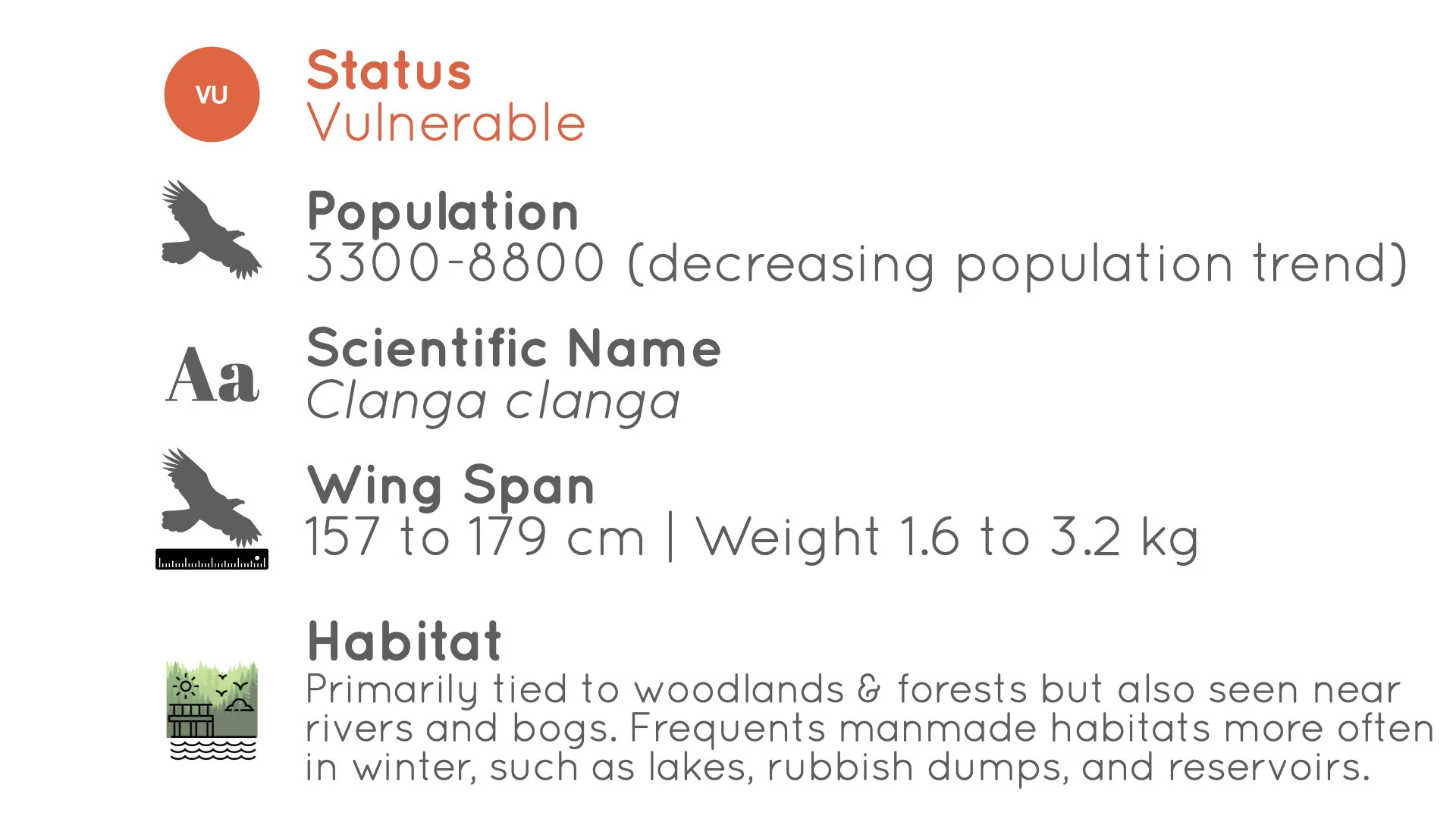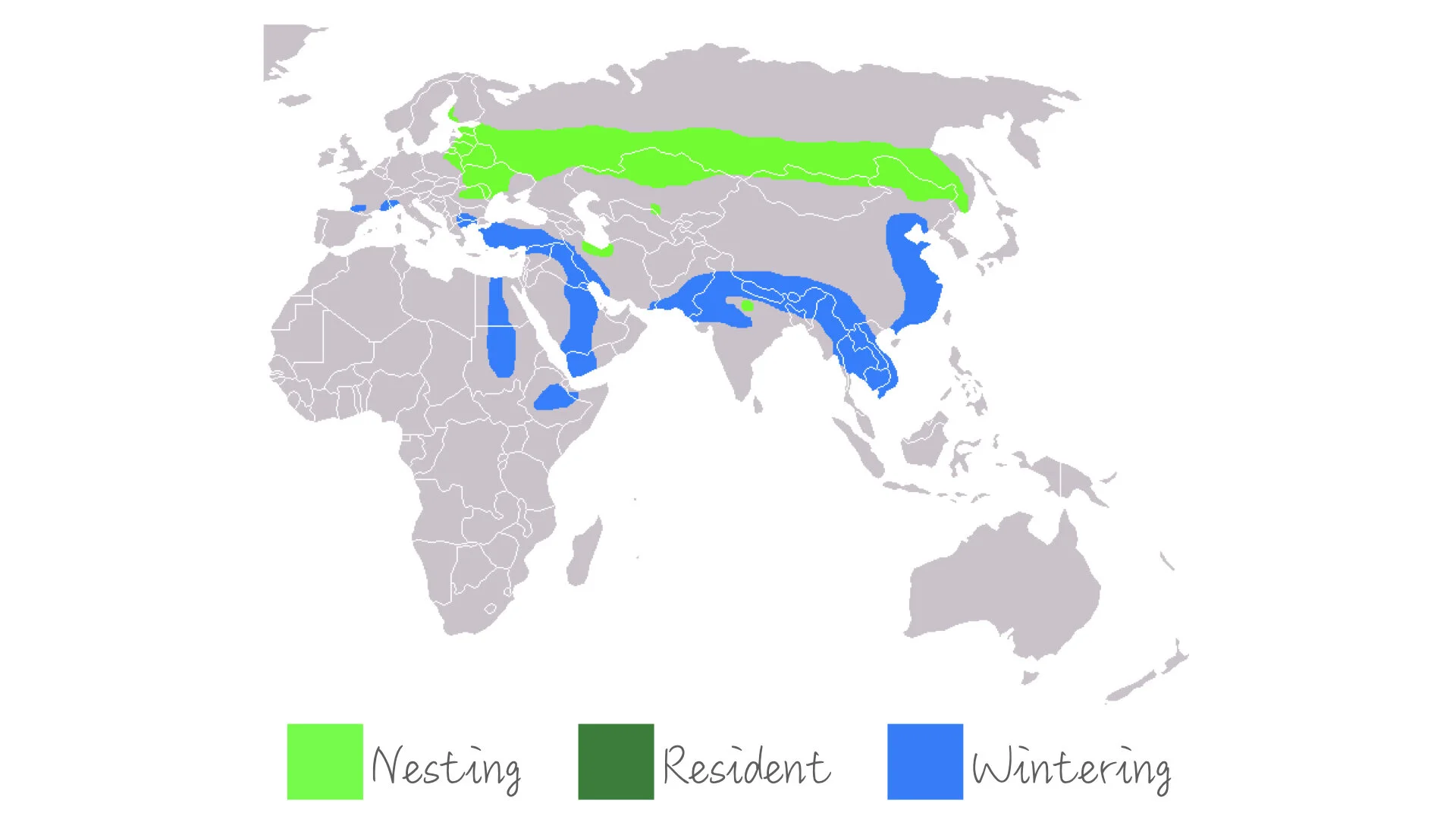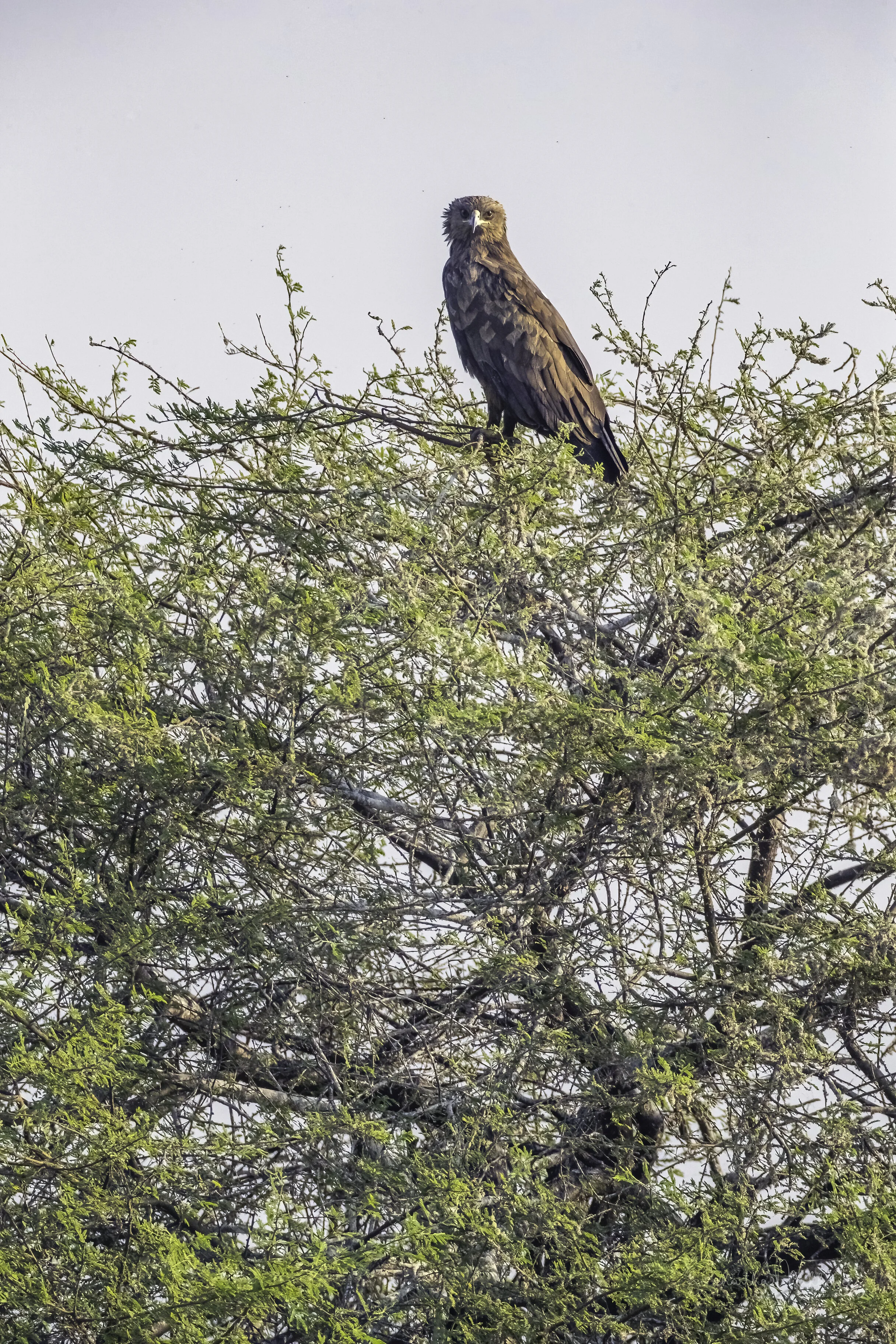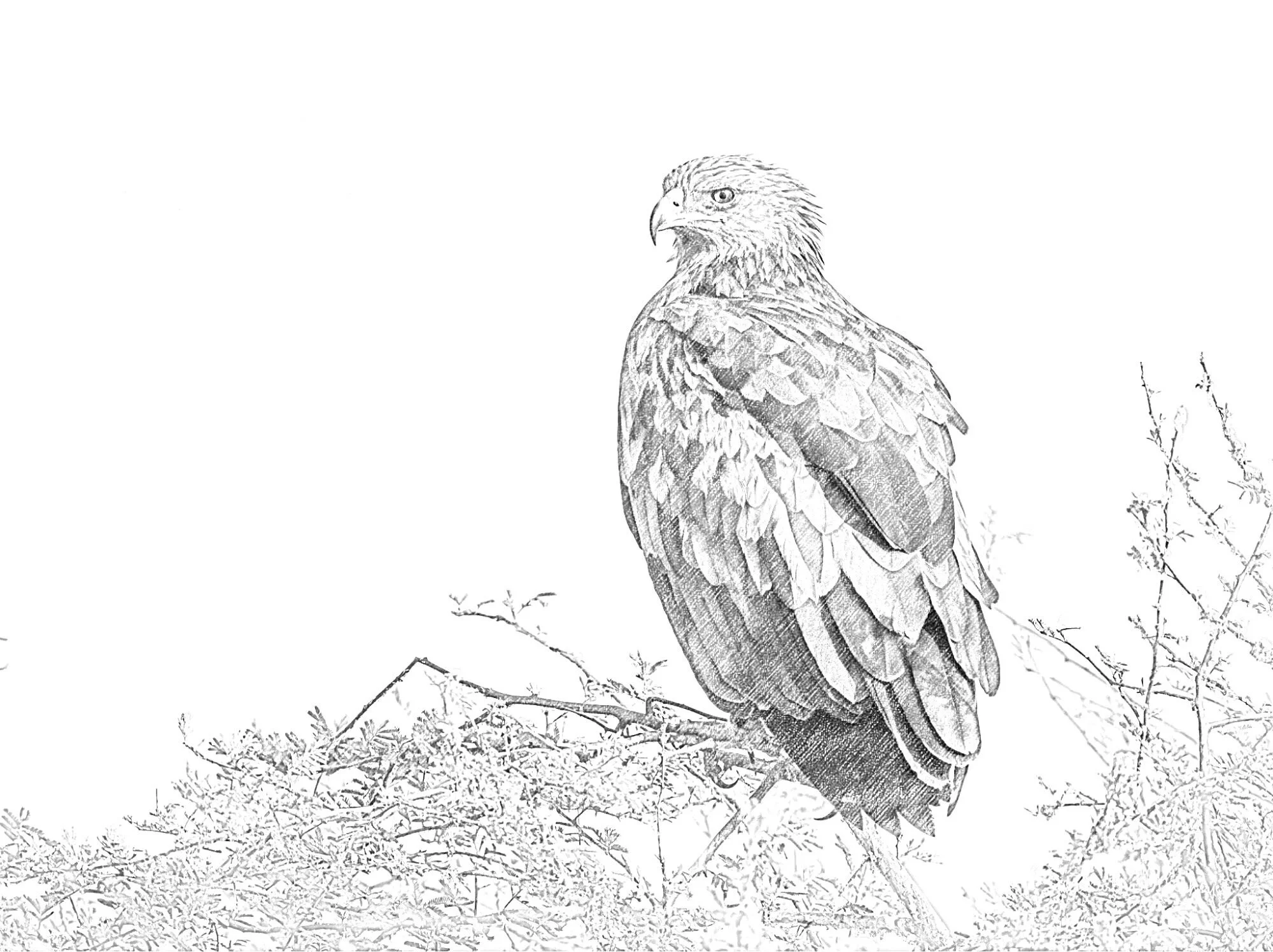Greater Spotted Eagle
Clanga clanga
VULNERABLE
The eagles of Kumbhargaon
The second of a three eagle series.
Bhigwan Bird Sanctuary
Continuing my series on the eagles of Kumbhargaon, this second post is about the Greater Spotted Eagle (Clanga clanga), seen in the area around Bhigwan and the River Bhima. This area is vast and unique with diverse habitats ranging from the shallow wetland ecosystem of the Ujni backwaters to the surrounding rich farmlands and dry deciduous scrub forest with interspersed grasslands.
When one looks to the south of Bhigwan, one sees the wide Ujni backwater wetlands, illustrated in the 16 photo single row panorama below, a shallow waste water reserve formed by the discharge of water from the Pune region dams like Panshet, Pawna, Khadakwasla, Varasgaon, Temghar, etc. This semi waste water has created an excellent wetland based ecosystem supporting a large variety of water birds, both endemic and migratory, and also helped with the local agriculture. Nearly 300 species of endemic and migratory birds have been recorded here. The rainfall in the Pune region decides the water level in Ujni dam. Lesser the water, the shallower it is and therefore more birds make it their home in the winter.
Click on the photo or the button below to view it as an interactive, high resolution, single row panorama where you can switch to full screen and zoom in on specific areas of the photo or even individual birds to see the details.
One of the larger birds of prey (albeit a medium size by eagle standards) in the Kumbhargaon wetlands is the Greater Spotted Eagle, occasionally just called the spotted eagle. Like all typical eagles, it belongs to the family Accipitridae. The scientific name clanga is from Ancient Greek translating to "scream". I spent a couple of days in Kumbhargaon village observing and photographing these magnificent eagles and some impressive predators like the Peregrine Falcon, Pallid Harrier, Montagu’s Harrier & the extremely skittish Eurasian Marsh Harrier.
Surrounding this lush ecosystem are the rich grasslands and fertile farms home to an equally impressive list of birds, mammals and reptiles like the Indian courser, chestnut-bellied sandgrouse, blue-cheeked bee-eater, grey francolin, woolly-necked stork, and demoiselle cranes. The Indian chameleon is often seen here and after dark, creatures of the night like the leopard gecko and termite hill gecko are out and about. Although rare, the common sand boa, rat snake, and Russell’s viper are also spotted. The open areas around the villages host mammals like the black-naped hare, jungle cat, golden jackal, and Indian grey mongoose. The Asian palm civet can also be seen, especially at night. The extensive grasslands protect many mammals like the Chinkara, Hyena, Wolf and Indian fox. It is also popular for grassland birds and the birds of prey, including the Steppe Eagle and the rare Eastern Imperial Eagle. While largely unnoticed, frogs, toads, damselflies, dragonflies, beetles, and scorpions also inhabit the area. A study published by the Zoological Survey of India in 2002 reported 54 species of fish.
Chinkara
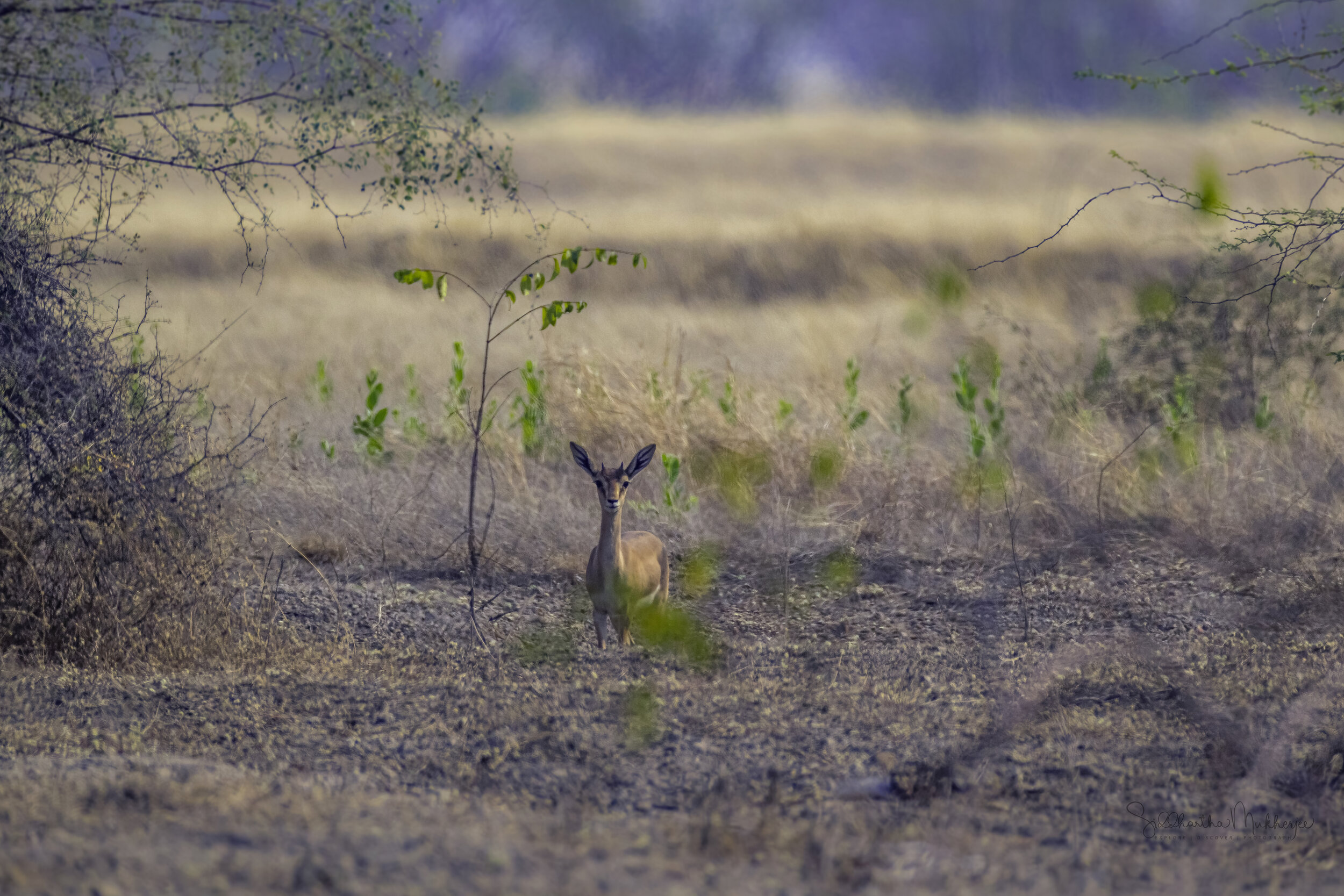
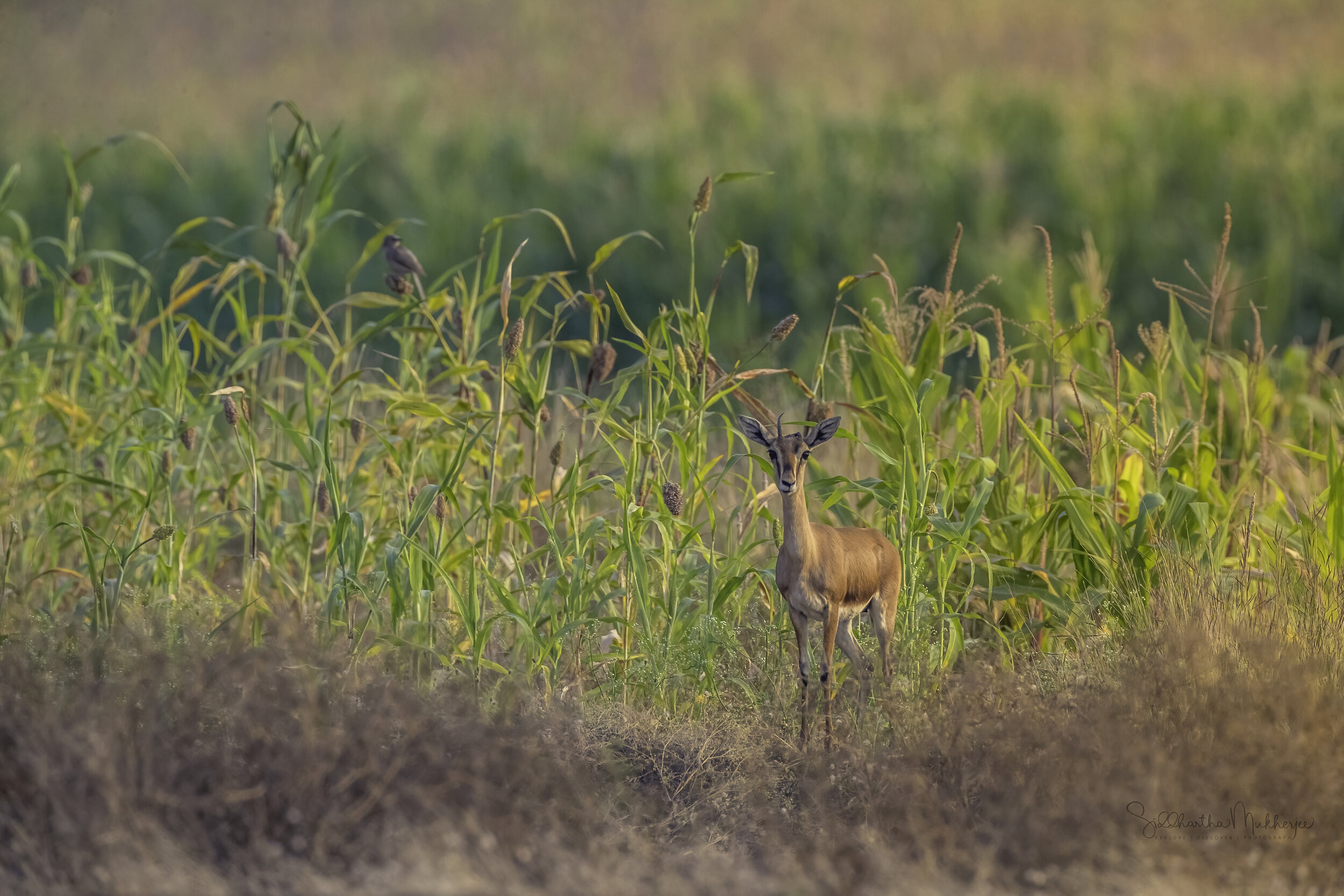

Apart from the grasslands, specifically for the migratory water birds, there are two areas where one can observe:
the Diksal area &
the Kumbharwadi area.
During my time here we were hosted by and had the expert help of Sandip Nagare and his team of knowledgeable guides from the Agnipankha Bird Watcher group, especially Ganesh Bhoi, who went out of their way to ensure we had fantastic opportunities to explore, discover, observe & photograph over 82 species of birds and wildlife including some rare ones. We stayed at Sandip’s homestay of the same name and had the added pleasure of indulging in delectable home cooked food.
With that as the prelude I have this blog as the second of a three part series on the eagles of Kumbhargaon focusing on the globally threatened and vulnerable Greater Spotted Eagle.
‡‡‡‡‡
The Greater Spotted Eagle
This medium-sized eagle is very similar in general appearance to its closest relative, the lesser spotted eagle, which shares part of its range. Head and wing coverts are very dark brown and contrast with the generally medium brown plumage; the lesser spotted eagle has a paler head and wing coverts. The head is small for an eagle. The similarities of the greater spotted to the lesser spotted often results in misidentification as being that species. This is further complicated by occasional hybrids between the two species.
In winter, it occurs in the range of the Indian spotted eagle (C. hastata). From this recently validated relative, it can be distinguished by the darker color and lighter eye (not darker than the body plumage at distance, lighter at close range), and in juveniles, the strong spotting. It is also a bit larger – though this cannot be reliably estimated in the field – and in the winter quarters prefers wetland habitat as seen here at the Kumbhargaon wetlands.
Greater Spotted Eagle Range
This is a species of wooded country. The population is entirely migratory. It breeds from northern Europe eastwards across Eurasia, and winters in south-eastern Europe, north-eastern Africa, the Middle East and the Indian Subcontinent. Migration to the breeding grounds takes place fairly late; in Bhutan, for example, birds can be seen with some regularity until the end of March.
The spotted eagles as a group although quite distinct from the typical members were formerly included in the genus Aquila, the "true eagles". They are now placed in their separate genus Clanga.
In its winter range, the species is more social than when breeding. Small flocks of up to ten birds or so, of varying age, can be seen to patrol the land together. They also associate with other Accipitridae such as local and/or migrant black kites (Milvus migrans lineatus and govinda) or steppe eagles (Aquila nipalensis), distinctly smaller and larger raptors, respectively. The greater spotted eagle hunts small mammals and similar, mainly terrestrial, prey. They are also known to prey on the young Asian openbills who nest on the acacia trees sprinkled around the wetlands illustrated in the photos below.
The greater spotted eagle is classified as vulnerable to extinction by the IUCN. Based on statistics sourced from Bird Life International, the world population of this eagle is declining and is estimated at 3300-8800 owing to extensive habitat loss and persistent persecution.
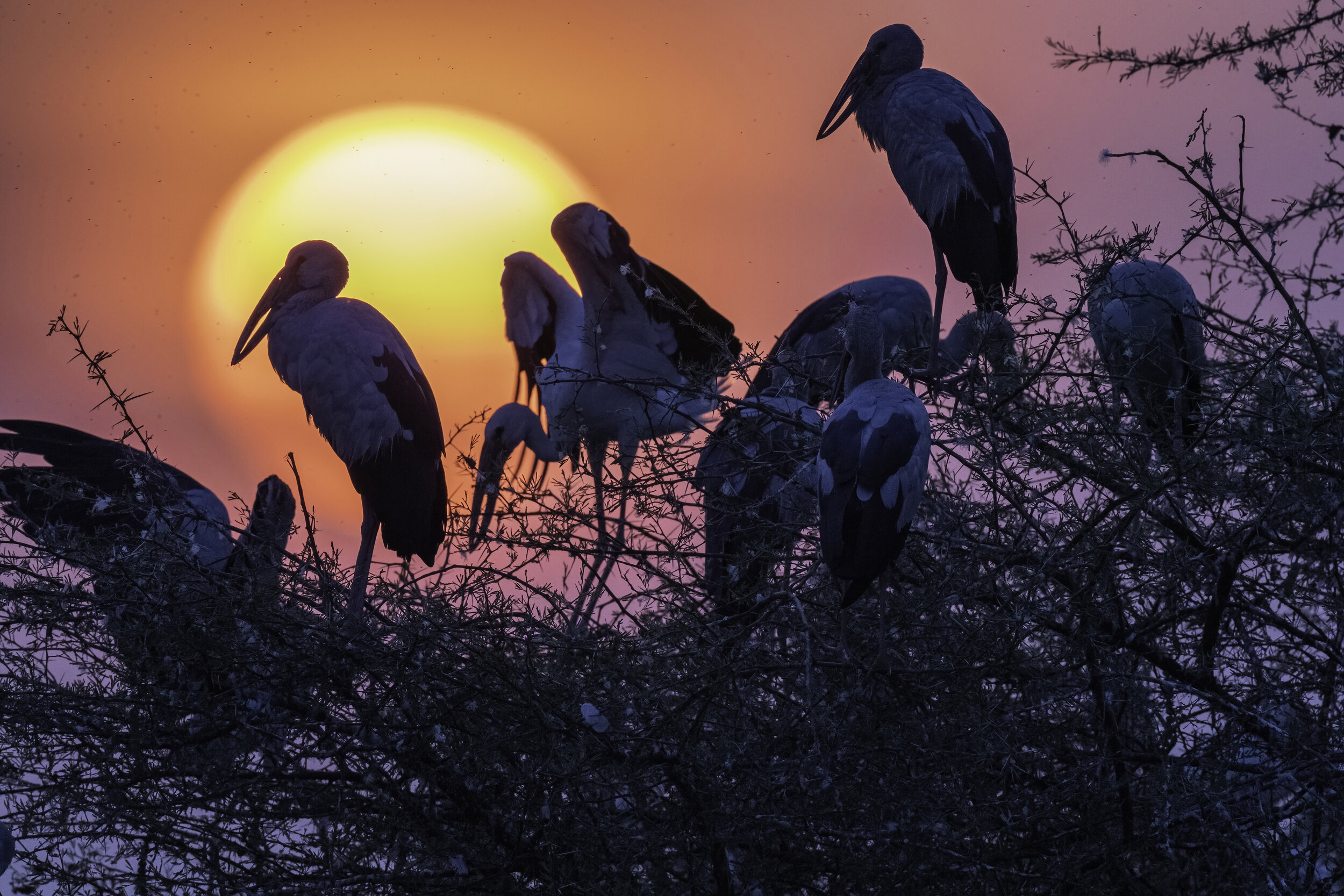
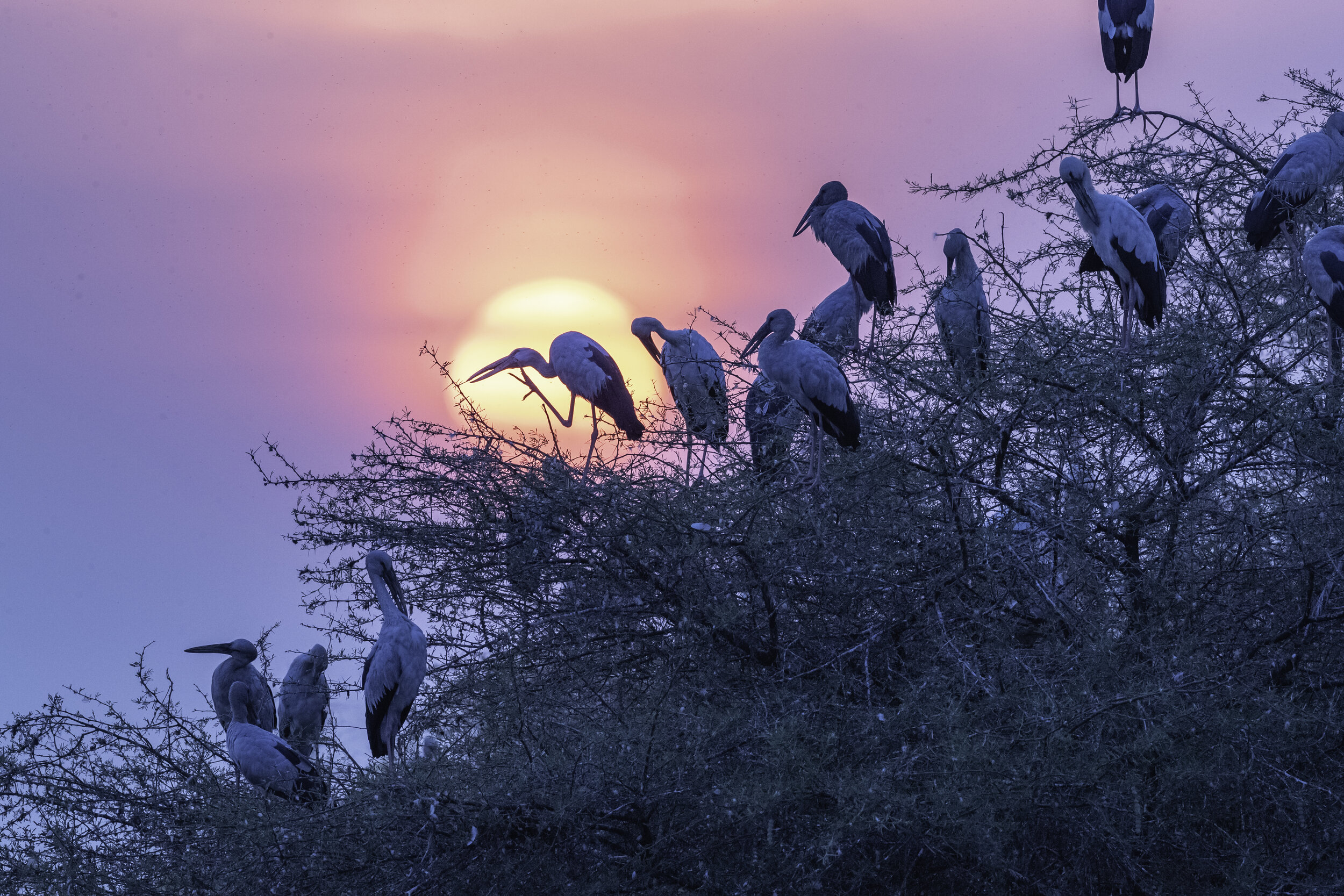
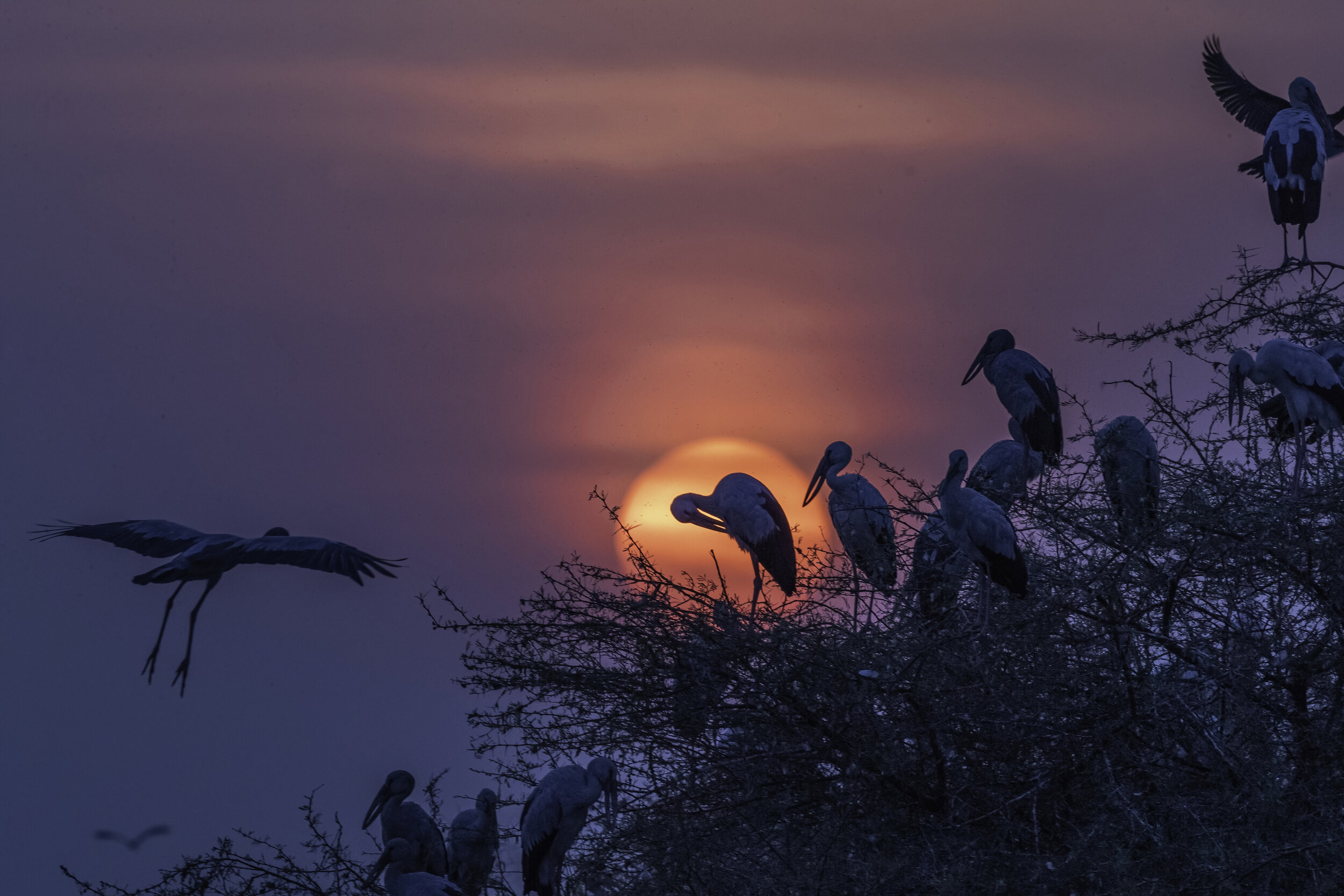
The following are some photos of the greater spotted eagle recorded at the Kumbhargaon and Bhigwan wetlands with a final panorama as it flew away from us.
The call of the Greater Spotted Eagle (Clanga clanga)
A 4 photo panorama of the Greater Spotted Eagle as it flew away from us in all likelihood to the perch on the same tree it was on in the second photo.
The following footage was recorded from a boat on 12th & 13th February across the wetlands of Kumbhargaon. There is a certain degree of shake and wobble due to the constant moment of the boat and in some instances when the breeze picked up & the waves became larger the wobble worsened. :) While we were approaching the eagle, trying to row as quietly as possible, the movement of the boat and the video is dictated primarily and completely by which row was pulled. Thanks to our phenomenal guide Ganesh Bhoi for keeping it steady as much as was physically possible. Some fun times doing this one especially when I had my set up at 1200mm (600mm+2x). Find what I use during these trips in my bag.
It is truly an honour and privilege to be able to get close to and watch these magnificent birds of prey.
For more videos: Video Shorts
Related Posts


